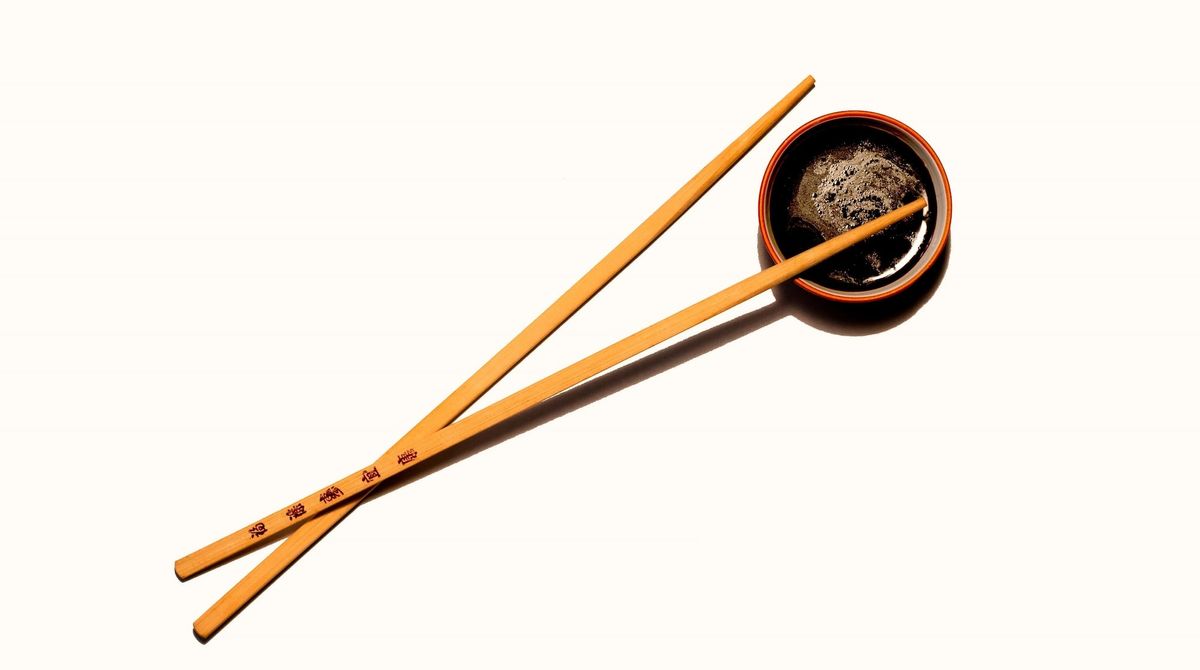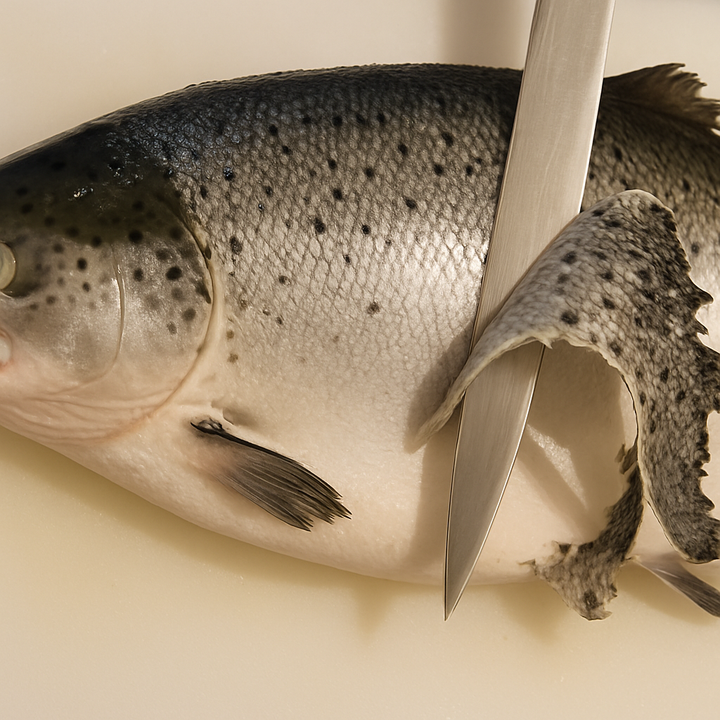Shoyu: Ultimate Guide to Soy Sauce Varieties
Shoyu, a linchpin of Japanese culinary arts, enriches dishes with its umami and salty essence. This narrative explores Shoyu's essence, historical journey, and diverse variants, highlighting its unique heritage and distinct global standing.

Shoyu, a cornerstone of Japanese culinary arts, brings a blend of umami and salty notes, effortlessly elevating cooked dishes or serving as a dipping companion.
But what embodies shoyu, and why does it hold a revered spot in Japanese cuisine?
In this narrative, we'll unveil the essence of Shoyu, traverse its historical roots, and delve into the diverse variants of this quintessential Japanese condiment.
Shoyu, synonymous with Japanese soy sauce, boasts a rich heritage and unique characteristics that distinguish it from other soy sauces across the globe.
What is Shoyu?
Shoyu is the Japanese variant of soy sauce, a cherished condiment crafted from a fermented blend of soybeans, roasted grain, brine, and specific molds like Aspergillus oryzae or Aspergillus sojae.
Distinct from other soy sauces, shoyu undergoes a unique brewing and aging process, culminating in a flavor rich in umami, with a hint of sweetness and lower salinity.
It comes in various types including Koikuchi (dark soy sauce), Usukuchi (light soy sauce), and Tamari (less wheat or gluten-free), each finding its place in different culinary applications within Japanese cuisine.
History and Origin
Shoyu's heritage hails from ancient China, with early versions like "chiang" and "shih" arriving in Japan before 700 AD, evolving into shoyu by the 16th century.
The turn towards shoyu in Japan was significantly molded by Buddhism and its dietary shifts in the 7th century.
A Japanese Buddhist monk, returning from China, introduced the original soy sauce recipe, which was gradually adapted to local tastes and ingredients.
According to Japan's official Soy Sauce Information Center, shoyu commerce commenced around 1580 in the Kansai region, with Tamai Soy Sauce pioneering as possibly the first shoyu and miso vendor in Osaka, propelling its popularity from Kansai to Kanto and beyond.
With the dawn of the Edo period in 1603, Noda and Chosi cities in Chiba prefecture rose as key shoyu production locales, finetuning the flavor akin to today's shoyu.
Soy Sauce Taste Characteristics
Shoyu has a unique taste characterized mainly by umami, a savory flavor, alongside a sweet-bitter profile.
Its umami aspect, a taste often described as "pleasant savory," adds depth to dishes and is considered the fifth basic taste besides sweet, salty, sour, and bitter
The complexity of shoyu's flavor is astounding, with over 300 different flavor profiles noted, including hints of vanilla, fruit, whiskey, and espresso, which makes it a versatile ingredient in Japanese cuisine
Beneficial Effects
Shoyu is recognized for several health benefits. Being a fermented product, it supports the growth of beneficial bacteria like Lactobacillus bulgaricus in the digestive tract, improving digestive health and immunity
It's a good source of antioxidants, protein, and vitamin K, and contains compounds like isoflavones which may help reduce menopausal effects
Other health benefits include aiding digestion, promoting a healthy gut, and providing essential B vitamins like niacin, riboflavin, and pyridoxine
Types of Japanese Soy Sauce
There are several types of shoyu, each with distinct characteristics:
Dark Regular Soy Sauce (Koikuchi Shoyu)
Koikuchi Shoyu, whose name subtly hints at its "dark mouth" essence, is the quintessential soy sauce in Japan, accounting for nearly 80% of the country's shoyu production.
Originating from the Kanto region, its characteristic dark color and profound umami flavor come from a balanced fermentation of soybeans and wheat.
The meticulously brewed concoction undergoes a careful aging process that enhances its rich, savory profile.
The versatile nature of Koikuchi Shoyu makes it a staple in Japanese households and restaurants alike, lending its depth of flavor to a myriad of dishes.
Whether used as a marinade, seasoning, or dipping sauce, its well-rounded salty-umami essence, particularly elevates grilled fish dishes, making it an indispensable companion in Japanese culinary endeavors.
Light Soy Sauce (Usukuchi Shoyu)
Hailing from the Kansai region of Japan, Usukuchi Shoyu, or light soy sauce, presents a delicate hue but packs a flavorful punch.
Despite its name suggesting a pale color, Usukuchi shoyu doesn't skimp on taste, boasting a higher salt content compared to many other shoyu varieties.
Given its robust saltiness, a little goes a long way with Usukuchi shoyu, making it less ideal for use as a dipping sauce.
However, it shines when the goal is to infuse a dish with both a salty and umami essence, without significantly altering the dish's original color palette.
Double-Brewed Soy Sauce (Saishikomi Shoyu)
Saishikomi Shoyu, also known as "re-brewed" or refermented soy sauce, is a unique, premium variety of Japanese soy sauce.
It's crafted through a distinctive brewing process where the soy sauce is brewed twice—instead of brine, previously brewed soy sauce is used in the fermentation of the soybeans and wheat.
This double-brewing method results in a sauce that's richer, darker, and more complex in flavor compared to regular shoyu like Koikuchi.
Originating from the Yamaguchi prefecture, Saishikomi Shoyu is often reserved for special occasions due to its intense flavor and higher price point.
It's ideal for sashimi, sushi, or other dishes where a robust, less salty, and slightly sweet soy sauce is desired, accentuating the natural flavors of the ingredients without overpowering them.
Tamari Soy Sauce (Tame Shoyu)
Tamari Shoyu, a distinct variant of Japanese soy sauce, is cherished for its thicker consistency and deeper color compared to regular shoyu.
Originating from the Chubu region of Japan, Tamari is traditionally brewed with a higher concentration of soybeans and little to no wheat, making it a favorable option for those with gluten sensitivities.
The elevated soybean content imbues Tamari with a robust umami flavor, a balanced saltiness, and a subtle sweetness.
Its savory profile makes it an ideal dip for sashimi and sushi. As a glaze, Tamari transforms grilled meats like chicken or beef teriyaki into succulent treats. In stir-fries, a splash of Tamari enriches vegetables and proteins with a savory depth.
White Soy Sauce (Shiro Shoyu)
Among the array of shoyu, Shiro Shoyu, or white soy sauce, reigns as the lightest, often chosen to grace soups with its mild essence.
Tracing its roots to Aichi prefecture, Shiro shoyu boasts a pale, nearly see-through complexion, making it the preferred choice for dishes where color preservation is key.
Its gentle salty undertone also shines in salad dressings, offering a tasteful touch without overshadowing other flavors.
A simple yet tasty dressing can be whisked up by blending Shiro shoyu with olive oil, adding a savory whisper to crisp salads.
Sweet Soy Sauce (Amakuchi shoyu)
Amakuchi Shoyu, a sweet soy sauce variant, finds its roots in Japan's Kyushu region, where it enjoys popularity owing to its profound local connections.
Though there's speculation surrounding its favored status in Kyushu, many attribute it to the historical influx of sugar from the Netherlands via Nagasaki Port.
This sweet shoyu variant serves as an excellent marinade or seasoning, especially in dishes where a harmonious blend of sweet and salty is sought after.
Its culinary versatility shines when used as a glaze for yaki-onigiri or a delightful seasoning in tamagoyaki, enhancing the flavors with its unique sweet-salty profile.
Which Shoyu Maker Is The Best and The Most Expensive?
Kamebishi's Koikuchi Shoyu stands out for its Mushiro Koji fermentation, where malted rice rests on a straw and rush mat, veering from typical machine processes.
Ideal with sushi, sashimi, teriyaki, stir-fries, marinades, and soups, its savory essence enriches various dishes.
Additionally, Kamebishi crafts a distinctive Saishikomi Shoyu, aged for three years, indicating a flavor-rich soy sauce.
With a milder saltiness compared to other Saishikomi variants, Kamebishi suggests this shoyu for tsukemen dipping sauce and grilling fish or unagi (eel), showcasing its versatile and unique taste profiles.
20-Year Aged Kamebishi Soy Sauce - $120 (55 ml)
This variant boasts a rich umami essence with a distinctive aroma blending tobacco-leaf and soy notes. Born from time-honored brewing techniques, it embodies a culinary craftsmanship that reflects meticulous artistry.
38-Year Aged Kamebishi Soy Sauce- $310 (55ml)
This exceptionally rare and singular soy sauce emerges from age-old fermenting techniques. Its prolonged maturation journey sets it apart, marking it as one of the scant soy sauces in the market with such an extensive aging timeline.
Production Process
The production of Shoyu, a Japanese soy sauce, is an intricate process steeped in tradition.
It begins with the creation of a Koji mixture from soybeans and wheat, which is fermented under careful monitoring.
The mixture is then blended with brine to create a mash called Moromi, which is allowed to ferment for an extended period, often months. Throughout this period, the Moromi is stirred regularly to ensure even fermentation.
Following fermentation, the liquid is pressed from the solid residue to obtain raw soy sauce, which is then pasteurized and aged before being bottled and distributed, delivering the complex, savory essence that Shoyu is renowned for.
In Conclusion
In sum, the vast landscape of Shoyu unveils an array of soy sauce varieties, each steeped in unique flavor intricacies, brewing rituals, and cultural imprints.
The deep-rooted traditions and meticulous crafting seen in variants like Koikuchi and Saishikomi not only tantalize the palate but also evoke a profound respect for the culinary lineage and artisan mastery inherent in each Shoyu bottle.
This narrative warmly extends an invitation to indulge in a once-in-a-lifetime experience by savoring the most luxurious and prized Shoyu from Japan, opening the gateway to a transcendent culinary voyage.


